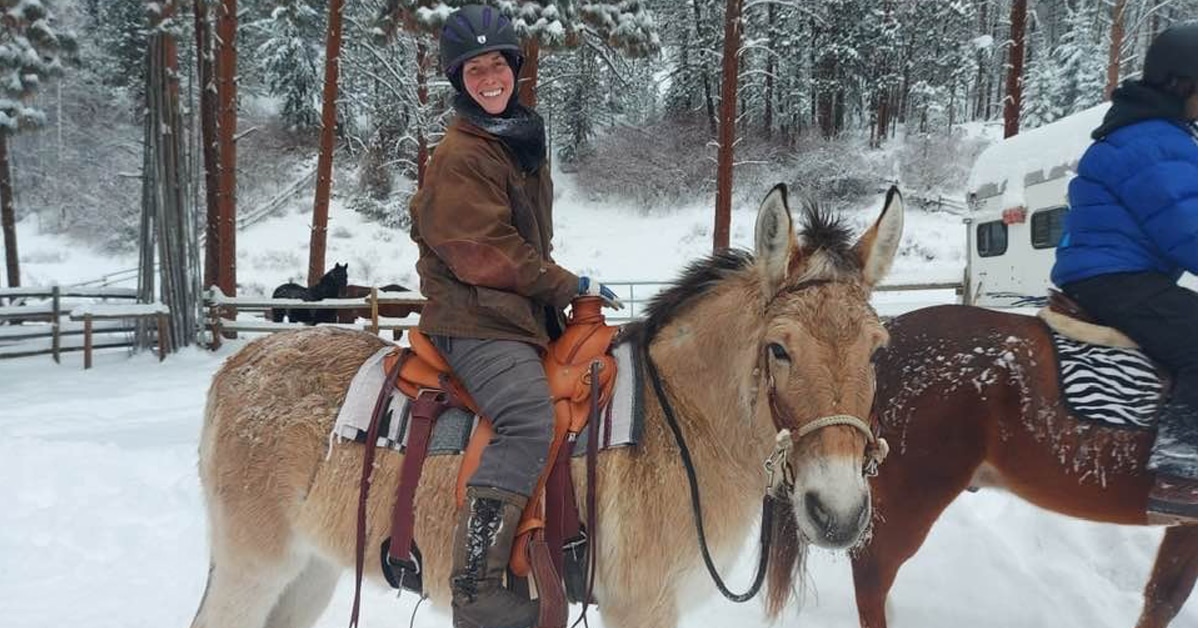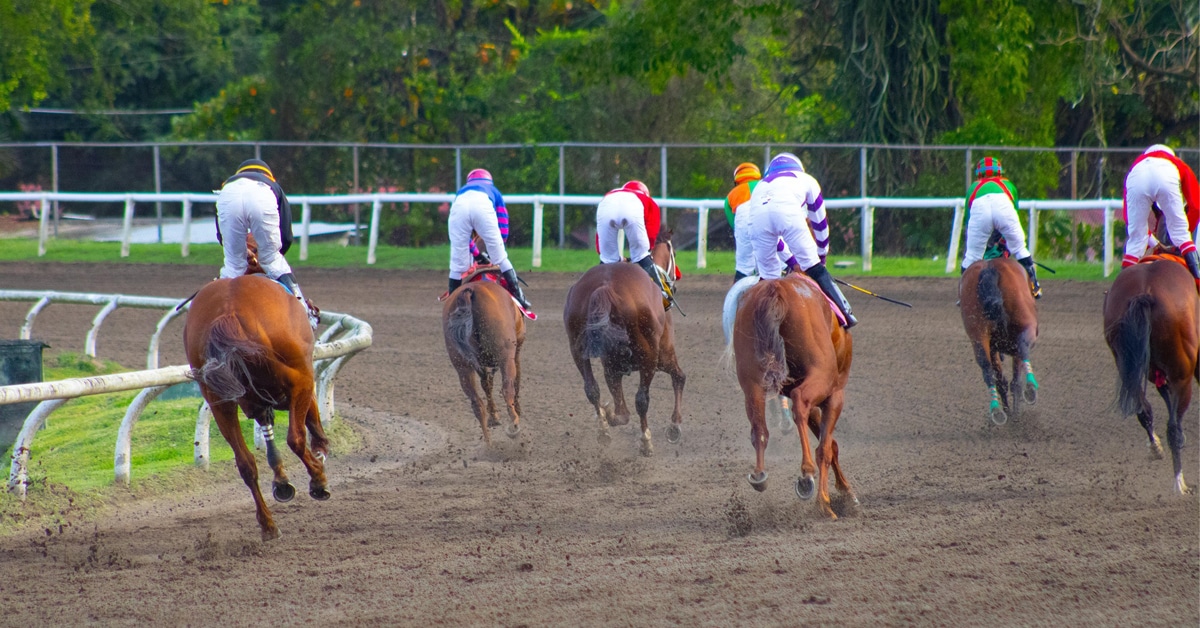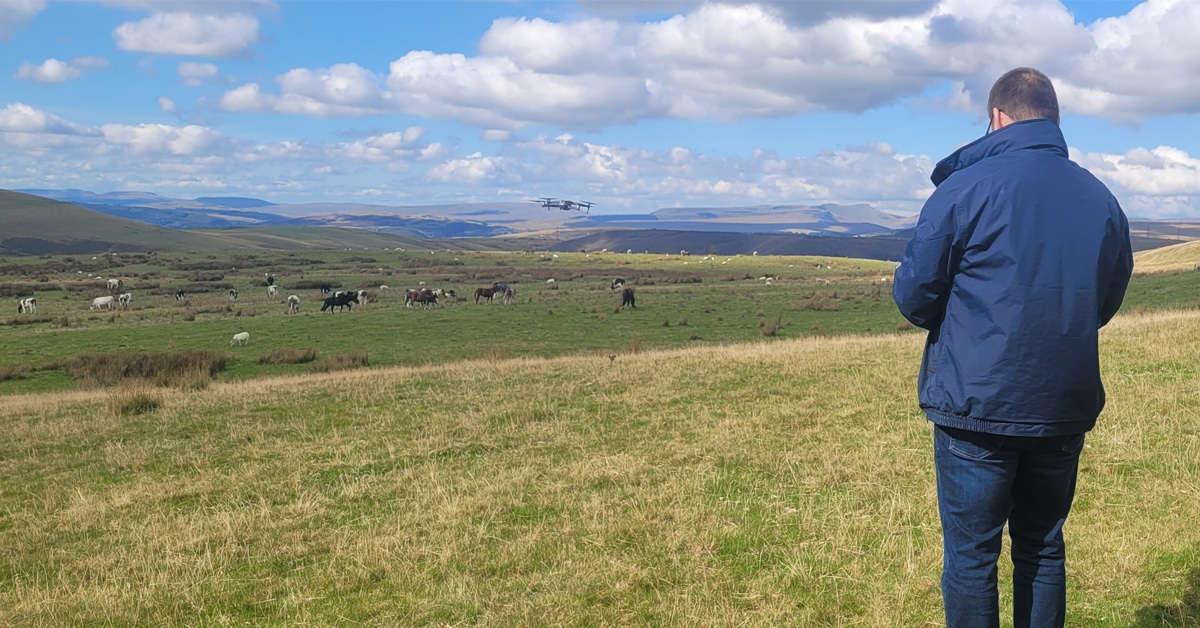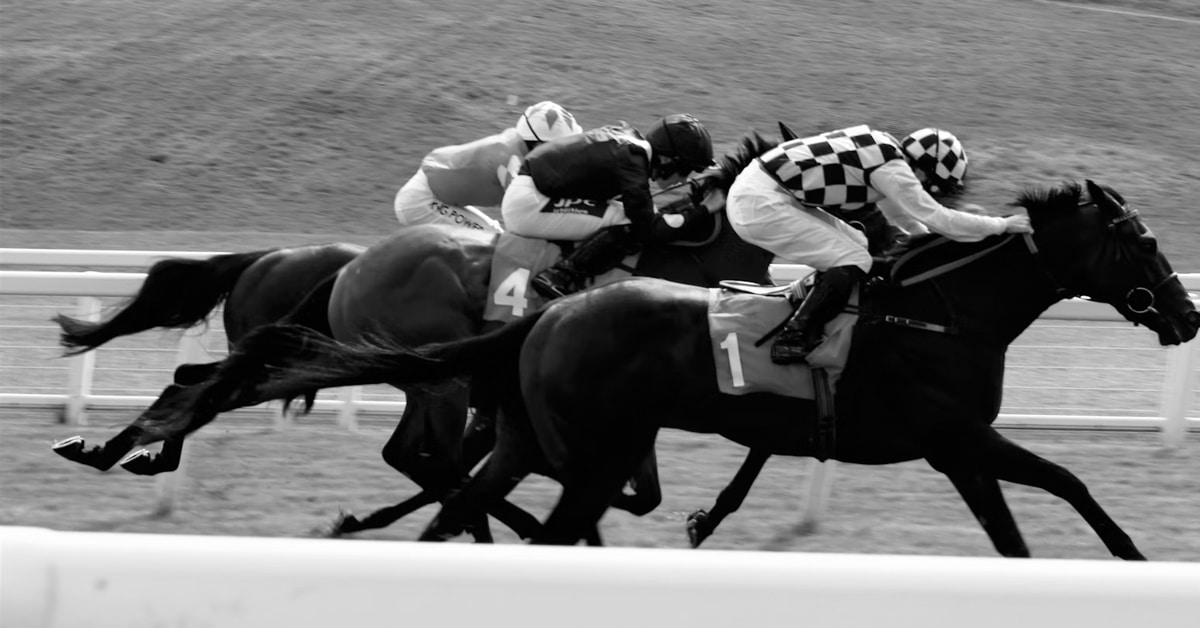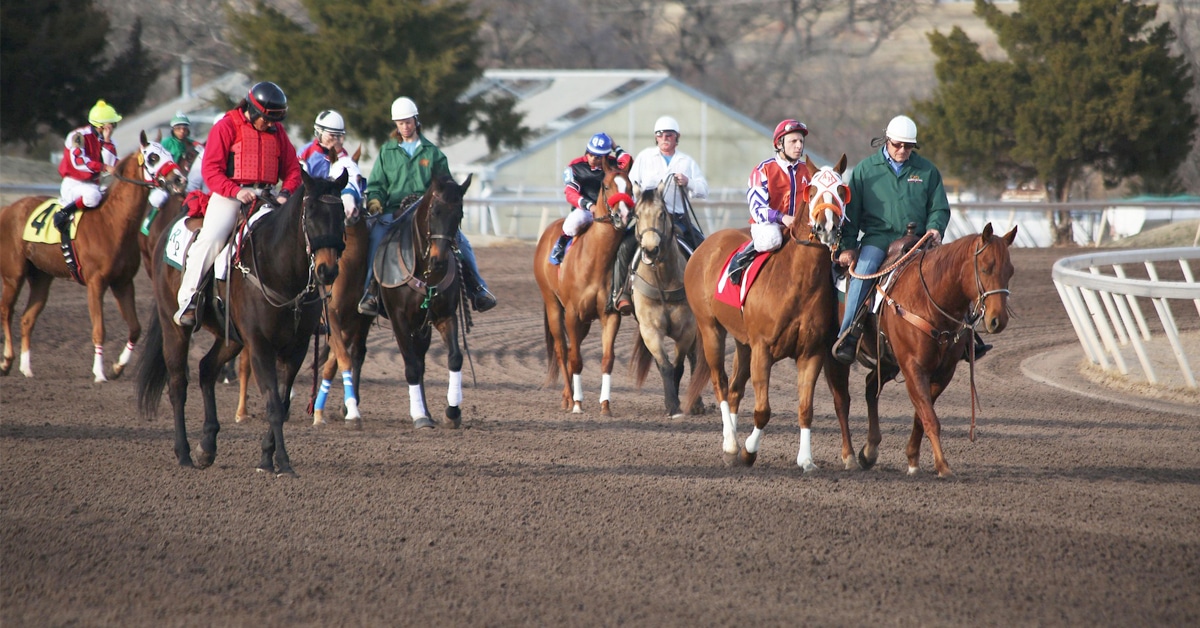If your horse feels stiff, tense, unbalanced, resists moving forward or struggles to bend, then the cause is probably a lack of suppleness.
Suppleness is an important factor for every horse regardless of discipline, competitive or pleasure. With suppleness, the shoulders move freely, gaits are elastic, the back is lifted, relaxed and swinging, the hindquarters are engaged, a soft contact of the bit is encouraged, and the horse has the ability to move forward without resistance to quiet aids.
Without suppleness, the muscles are constricted so that elasticity, freedom of movement and range of motion are restricted and results in choppy, quick steps; tension in the mouth, neck and back; being above or behind the bit; stiff, hollow back; issues with contact; and resistance to the aids.
While some trainers and riders try to resolve these issues with stronger aids or equipment, the compassionate rider addresses the root cause of the problem. The horse trained forcefully into submitting will always carry tension and stiffness in his body and mind. While the horse trained patiently and compassionately with a focus on improving suppleness will move with physical and mental balance and relaxation.
There are two types of suppleness – longitudinal and lateral. Longitudinal suppleness refers to relaxation and roundness over the horse’s back. Lateral suppleness refers to side-to-side flexibility. It affects the horse’s balance ‒ particularly around turns ‒ and his ability to bend.
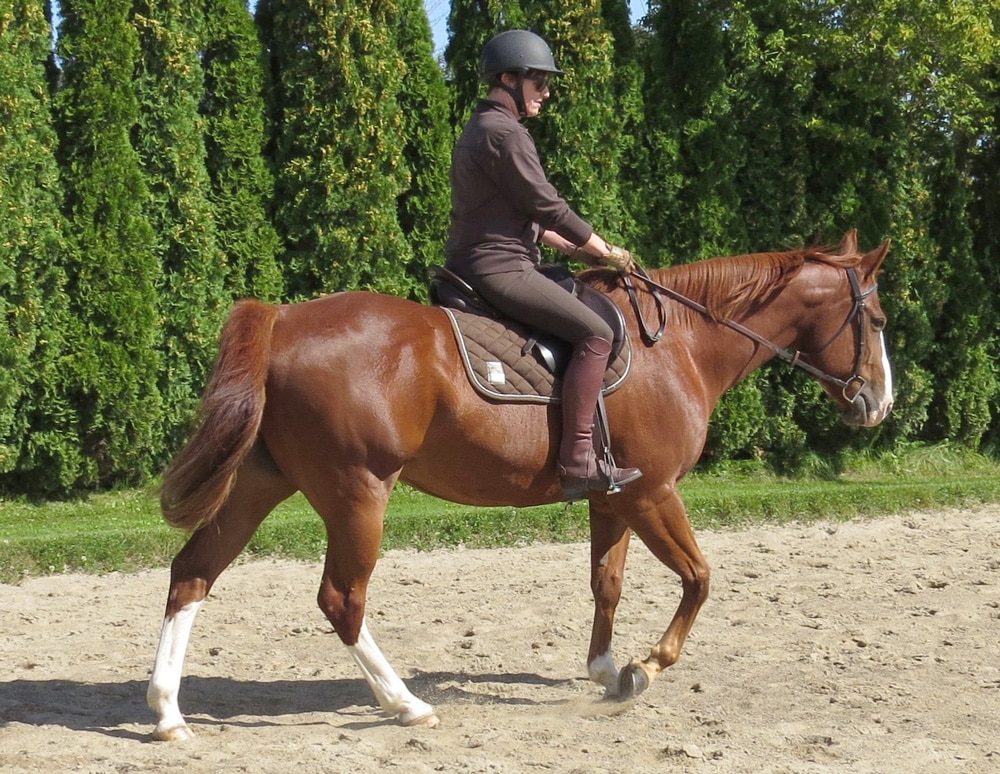
An example of longitudinal suppleness at walk. Note the right hind leg stepping well underneath, level neck and relaxed ears. (Anne Gage photo)
Longitudinal Suppleness
Longitudinal suppleness refers to your horse’s ability to engage his hindquarters, lift his back, transition smoothly between gaits, and adjust his length of stride while remaining balanced and relaxed. The dressage term “through” is used to describe the horse’s energy coming over a relaxed and swinging back into an elastic and accepting contact on the bit. Tension in either you or your horse blocks that forward flowing energy.
Your horse can only work through his back without any signs of tension in his muscles when he is physically and mentally free of all tension. When riding, you can tell if your horse is loose and relaxed by:
- The relaxed, soft expression on his face ‒ mouth, eyes and ears.
- Feeling the swing of his back.
- His tail slightly lifted and swinging with the movement of his back.
- His mouth being closed and quiet.
- His ability to stretch his neck forward and down in walk, trot and canter while remaining balanced and working off his hindquarters.
- Hearing him snorting softly ‒ a sign of mental relaxation
Signs that your horse lacks suppleness through his back, include:
- Stiff, hollow back and above the bit
- Inconsistent rhythm
- Unable to extend/lengthen his stride as he loses his balance, quickens his pace and hollows
- Hindquarters not engaged (not reaching well underneath)
- Unbalanced, rough transitions
- Resistance to moving forward off the leg aids
- Travels on the forehand
Lateral Suppleness
Lateral suppleness means that your horse bends through his whole body to the left and right. When you are riding a bend, turn or circle, your horse should bend around your inside leg in the direction you are asking.

Tension is created when the horse is overbent through the neck. (Anne Gage photo)
A correct bend requires “straightness” or alignment of the horse’s spine from his nose to tail. His nose is in line with the centre of his chest, his neck is between his shoulders, his hind feet track directly behind his front feet and his spine mirrors the line he is traveling.
True bend’ and ‘counter-bend’ are terms used to describe the horse’s bend relative to the direction he is traveling. True bend means the horse is bent in the direction he is traveling. So, if you are walking on the left rein (counter-clockwise) and your horse is bending around your left leg so that his spine is mirroring the line you are walking, then he is in true bend. If he is bending around your right leg when you are on the left rein, then his is in counter-bend. In order to help keep your horse balanced and relaxed, it is important to be able to read which bend he has at any given moment.
It is the rider’s legs rather than the hands that create the bend. Using the reins to steer or “bend” the horse creates imbalance and tension. If you can see the side of your horse’s face, he is overbent. The bend is happening only in the neck rather than through the body. In a correct bend, you can just see the corner of his inside eye.
To ask for the correct bend:
- Apply pressure from your inside leg just behind the girth working with the swing of the horse’s barrel. Actively push as the barrel swings out and passively follow the barrel as it swings in.
- Look in the direction of the bend keeping your outside shoulder over your outside hip. This helps to maintain contact on your outside rein, which prevents overbending through the neck.
- Open the inside rein slightly (without moving the hand or elbow backward) to indicate the direction the horse is being asked to turn
- If needed, move your outside leg back slightly to prevent the hindquarters from swinging out.
In part two, I’ll provide some simple exercises for improving your horse’s lateral and longitudinal suppleness.
The Latest
